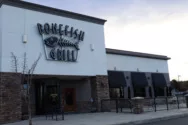
Home » Drop in demand puts potato market in unfamiliar territory
Market volatility
Drop in demand puts potato market in unfamiliar territory

June 12, 2025
Spring is usually a time of optimism for potato farmers, but this year, industry leaders have two main concerns: international competition and trade tariffs.
Washington’s potato industry faces new uncertainty following unexpected shifts in the worldwide market along with increasing economic pressures on local growers.
As competition intensifies internationally, state growers are receiving contracts to plant significantly less; there are concerns over state regulations; and a new administration’s trade policies have changed the landscape for potato farmers.
Other countries began significantly expanding potato production and processing, creating challenges for the state’s exports.
“In the last year-and-a-half to two years, out of nowhere, we have seen India and China come on very strong in both potato production and potato processing,” said Chris Voigt, executive director of the Washington State Potato Commission. “They built a ton of new potato processing plants, and they’ve got more on the schedule to be completed in the next three years. So, that’s made everybody a bit scared because the cost of doing business in China and India is much lower.”
This has allowed Asia to snatch away some of the lower-end and cost-sensitive markets nearby.
“India and China have been able to go into the Filipino market and undercut our prices by quite a bit, so we’re starting to lose a fair amount of business,” he said.
In addition, potato sales to China began drying up eight years ago.
“When Trump came in during his first term, he went after China and China retaliated,” Voigt said. “Potatoes and french fries were part of that retaliation, so we used to be in about a $120 million market, which was a great market for us, but now our market share has dropped to $19 million last year.”
Voight said the potato industry has essentially “written off China” and might finish 2025 with $4 million in sales there. That means the state’s high-quality spuds are going to other markets, which is important in an industry that generates about $7.35 billion in economic activity statewide and supports 32,000 jobs.
Washington potatoes are still in demand by quick-serve restaurants and fast-food chains, considered “upper tier” customers by the industry.
“They have a reputation to protect and want to make sure they have really consistent, fresh quality year-round,” Voigt said. “It’s usually the national brands that’ll stick with Washington potatoes and french fries, but more of the mom-and-pop operations or the chains that have 10 locations instead of 100 will be the ones that will likely switch (to a cheaper product).”
The worldwide appetite for french fries continues to grow, with the state seeing a nearly 3% increase in exports of frozen fries in 2024, valued at $1.1 billion. The top markets were Japan, South Korea and the Philippines.
Fresh or processed
Potatoes include two main varieties: those eaten fresh or those that are processed. Potato shape determines the processing destination, with growers aiming for round potatoes if they’ll be turned into potato chips, and oblong or brick-shaped if they’ll end up as fries, Tater Tots or other frozen varieties.
Potatoes sold fresh in a store are typically lower in starch content, so they hold together when cooked and don’t end up mushy. Potatoes that might be misshapen usually end up in the dehydrated market, destined to become flakes for instant mashed potatoes.
The 90 potato growers in Washington are constrained with available farmland due to water rights and even though Washington grows the most potatoes per acre, the U.S. Department of Agriculture put last year’s production at 160,000 acres, just off its cap of 165,000 acres. Lower demand is putting this year’s planted crop at more like 145,000 acres, potentially the lowest in decades.
“I’ve been here 19-and a half years, and we’ve never been that low before,” Voigt said. “That’s simply because of demand more than anything, and all the competition.”
It’s a far cry from the last decade when Washington couldn’t keep up with customer appetites for potatoes and had to ration its international customers with quotas on exports which are typically the processed variety. “We ran out of ground to grow potatoes on,” Voigt said.
When you factor in where it’s suitable for potatoes to grow in the state, “there is ground that’s not available because it’s a tree fruit or grapes and they’re not going to be able to rotate the crop because you can’t grow potatoes on the same ground every year. It has to be every four years.”
Demand drops
Grower Grant Morris farms potatoes in Pasco for Schneider Farms, and he sees the dropping demand as an across-the-board problem.
“Last year, consumers couldn’t get enough of anything and now no one’s eating. I really don’t know how every single crop can be down,” he said.
Demand has the price for fresh potatoes a bit depressed, in part due to another oversupply from Idaho, which grows about 29% of the nation’s potatoes compared with the 23% grown in Washington.
Prices for a 50-pound box headed to a restaurant or grocery store are selling for about $4 less than they were a year ago, Voigt said. But the smaller bagged potatoes, sold in 5- or 10-pound units, are up slightly, about $2 more than last year.

Processed market
It’s the processed market that’s seeing the most volatility. Potato processors negotiate with a group of growers on the price and acres needed, and growers are seeing big swings in the acreage they’re paid to grow. Not only does this create the potential for losses with lower demand, but growers also must prep their fields as early as the previous July, well before they get a contract, meaning they could sink money into the endeavor that no one ends up paying for.
“A grower can have up to $1,000 an acre into a field before we even put fertilizer on in the spring to plant potatoes,” Morris said. “So, we have a lot of guys who spent that money, and we got the price negotiated (with processors), and that’s settled and done, but the processors weren’t giving those contracts out, so growers didn’t know their acres yet.”
When they did learn the number of contracted acres for the year, it was often way off from what they predicted or hoped for.
“All three processors cut acres in different ways, but I think most people took some form of an acreage cut,” Morris said. “Some lost 100% of their acres, some lost 30% of their acres and some lost 15% of their acres; it wasn’t just a blanket number.”
Morris doesn’t see this contract timeline changing any time soon. He understands it’s “unrealistic” to expect processors to know in the summer what they’re going to need next year. There has been an effort to have decisions by the end of the calendar year, but nothing concrete.
“It’s just the way it is done in the Columbia Basin,” he said. “We can’t force them to give us a contract. I can’t call my processor and say, ‘It’s my way or the highway.’ There’s one of them and there’s 90 of us.”
On top of that, lingering uncertainty surrounding tariffs imposed by the U.S. are likely to create cautious estimates on processed potato demand, but so far not the immediate effects compared with other crops.
“We’re a little separated in the short term,” Morris said. “We have a contract this year and whether the tariffs are in effect doesn’t matter. But what will affect us is next year, if they don’t ship as much and don’t need high supplies and storage and freezers. That means demand will be down and the price will go down. So, it might be a little delayed for somebody like me, but an alfalfa guy or a Timothy (hay) guy, who is going to export their product as soon as it’s harvested, they will have the impact more immediately and their price will fluctuate because of it.”
Voigt said all the spring 2025 volatility brought by the tariff war has had a positive side for the potato industry.
“We have been trying to negotiate with Japan for I think the last 25 years, getting fresh U.S. potatoes into Japan. They have just stalled and stalled and stalled, and we haven’t made any progress. But now, our administration has threatened Japan with some pretty good-sized tariffs, and they are now at the table negotiating. So, we might get fresh potato access to the country,” Voigt said.
The head of the potato commission sees this as a top priority for the Trump administration and the potential leverage held by the industry, with a 2024 crop weighing in at about 10 billion pounds, and valued by the U.S. Department of Agriculture at $1.2 billion in Washington. It’s why some international players are even exploring investing in domestic potato processing plants within the U.S., a potential opportunity for growers facing reduced contracts.
Potato farmers are also awaiting any fallout from decisions made by state legislators during the 2025 session, Morris said.
“There’s a bunch of stuff we’re always kind of holding our breath on,” Morris said. “But right now, people are more focused on the exports, tariffs and overall economy. I’ve noticed everybody has the same story and it doesn’t matter whether you’re a legislator, farmer or somebody in town; it’s almost unified everybody in a way. It doesn’t hardly matter your political leanings, everybody has the same concerns, which maybe is a good thing in general, but I don’t know if we needed to have it the way they are accomplishing it.”
Agriculture + Viticulture
KEYWORDS June 2025
Related Articles
Related Products





